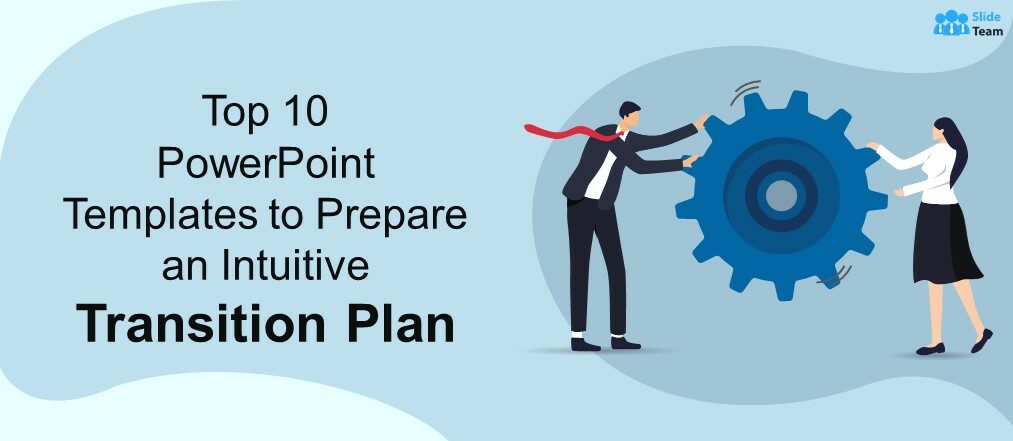Bringing change to an entire organization is a herculean task. Disruption to the status quo is generally not well-received, and getting active participation from keyholders, who will be the most affected appears nearly impossible. The wheels of change, however, cannot be stopped, as these allow a business to stay competitive.
A global authority on change management, John Kotter, from Harvard Business Review, has given several models for implementing organizational change, and successfully at that.
Just to reiterate, it is imperative that employees of the organization are brought on board with the changes that have been lined up. This is doable if they are given complete, unfiltered information about the change and their role in it. We present 10 editable PowerPoint templates to make sure everyone is ready to play their part.
Template 1: Kotter’s Change Model in Virtual Organizations
This PPT layout draws out the eight steps of this framework in a circular array. Note the step your organization is currently in and present changes needed to accomplish that step. The symmetric design and the dual-color schemes help keep the audience engaged. Download it now.
Template 2: Kotter’s eight-staged Organizational Change Model
Use this PowerPoint design to present the change process for your company. Follow the stages, in sequence, to educate those involved on their roles and responsibilities in actualizing this change. Segment and organize these steps for easier understanding. Get it now.
Template 3: Kotter’s Change Model in Colors of Life
Color code and organize the eight steps in adjacent blocks to let these flow visually from left to right. This PPT slide allows you to note the number, title, and activities for any step. Download it now to move towards the successful implementation of organizational changes.
Template 4: Kotter’s Model of Change as Stairs to Achievement
As you present the change model, categorize and label these using this PowerPoint layout. These categories define the function of steps such as creating an environment for change or engaging the whole team, etc. Get it now to showcase a clean and simple presentation.
Template 5: Kotter’s Change Model Framework
Showcase the roadmap to improvement with this PPT slide. Label each step and note the activities to implement. This template focuses on individual steps and what they entail for employees. Download it now.
Template 6: Kotter Change Model Process Slide; Acquire Memorability
A simple and neat PowerPoint preset, use it to make the eight steps acquire a memorability quotient. You can present this template as a way to keep the model fresh in everyone’s mind. Get it now.
Template 7: One-page List to Institutionalize Kotter’s Change
Present Koyyer’s change model in the form of a list with the help of this PPT slide. As it can be edited, you may change the font, its size, or the colors. Use it to educate your audience on details of the change taking place in your organization. Download it now.
Template 8: Eight Accelerators of Change in Kotter's Model
Employ this PowerPoint template to exhibit how to leverage market opportunities to push for organizational change. The slide covers accelerators for change such as formulation, communication, celebration, etc. Download it now.
Template 9: Practical Approach to Kotter’s Change Management Model
Learn, execute, and manage changes in the company by using this PPT design. It presents eight practical approaches in the form of a list. Some of these approaches include form, enable, generate, etc. Download this template to implement organizational change in the smoothest possible manner.
Template 10: Process to Lead Successful Change
Use this wheel visual PowerPoint theme to lay out the eight steps that will allow you to lead change within the company. The unique design will allow the audience to recall details with ease. Download it now.
A Guide to Kotter’s Change Model
Kotter’s Change Model is a framework for leading organizational change. The model is intended to be flexible, and it can be adapted to types of changes and organizations. The steps are not necessarily linear, and some may need to be revisited as the change process unfolds.
Leading organizational change can be difficult, but Kotter's change model provides a structure and a roadmap for success. You can increase the chances of leading your team or organization through change with the use of the steps outlined.
The model has eight steps:
- Establish a sense of urgency
- Create a guiding coalition
- Develop a vision and strategy
- Communicate the changes
- Empower employees to act on the changes
- Generate short-term wins
- Consolidate gains and produce more change
- Institutionalize new approaches
After a sense of urgency has been created and a guiding council has been formed, leaders need to develop a vision and strategy for the change process. This vision and strategy will help to communicate the goals of the change process to employees. This communication should be clear and concise.
Once this has been done, leaders need to empower them for broad-based action. This empowerment transfers ownership of the change process to employees and boosts commitment. Once employees have been empowered, leaders need to generate short-term wins. These wins will help to show employees that the change process is working and that their efforts are making a difference.
After short-term wins materialize, leaders need to consolidate gains and introduce change that has a wider scope. This consolidation will help to ensure that the changes made are long-lasting and sustainable. Finally, leaders need to institutionalize new approaches. This institutionalization will help ensure that changes become accepted and morph into new norms at the earliest.
Advantages of Kotter's Change Model
One of the biggest advantages of Kotter's change model is that it provides a clear and concise framework for leading change. The eight steps of the model provide a road map that helps leaders track their progress. It also acts as a signpost for checking whether the necessary actions to build change are working.
Kotter's change model also emphasizes communication Leaders need to ensure that all stakeholders are aware of the goals and objectives of the initiative. Kotter's model provides guidance on how to communicate with different groups within an organization.
Kotter's change model also offers the insight that change is a process, not an event.
Using this incremental approach, leaders can avoid pitfalls that can occur when change is attempted as a rapid, one-shot measure.
Disadvantages of Kotter's Change Model
One of the main disadvantages of Kotter's model is that it is time-consuming to implement. The eight steps can take months or even years to complete, which may not be feasible in many business organizations, where rapid transformation could be a necessity.
Another disadvantage of Kotter's model is that it relies heavily on the involvement of top management. Leaders need to have buy-in from senior executives. This can be difficult to achieve in organizations where there is resistance to change.
While the model includes steps for communicating with stakeholders, it does not provide guidance on how to overcome resistance. This can be a significant obstacle to ushering in change.
This information, we hope, helps you better understand this framework and allows you to implement organization-wide changes in a cohesive manner.
PS: Sometimes people need additional coaxing before they understand the necessity of change. Use the templates in our briefcase for change blog here to make an excellent…well, make a persuasive case for change.


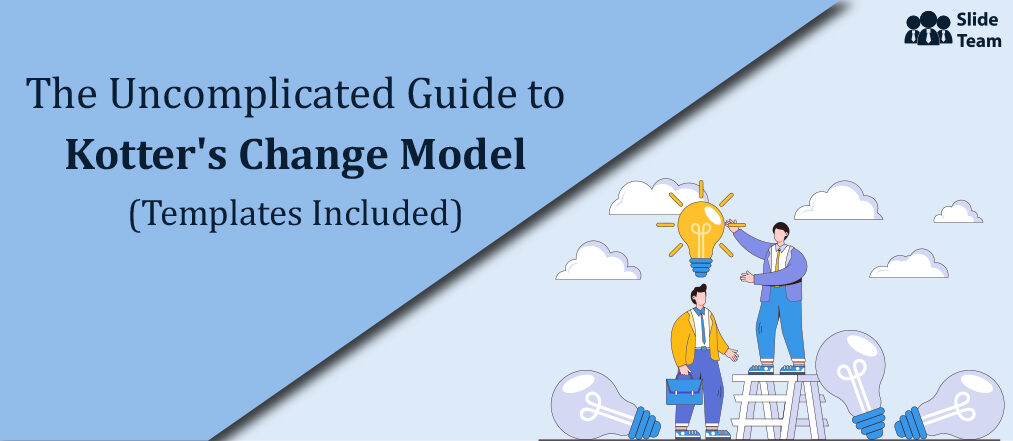


 Customer Reviews
Customer Reviews

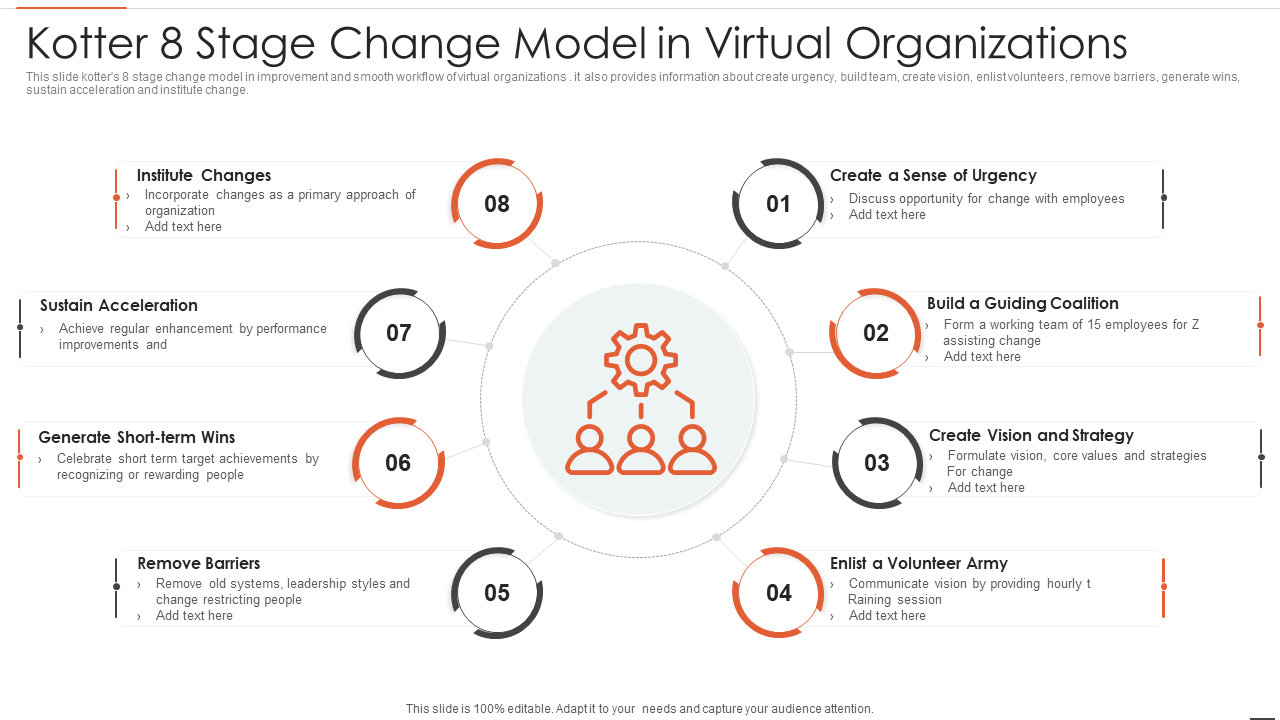
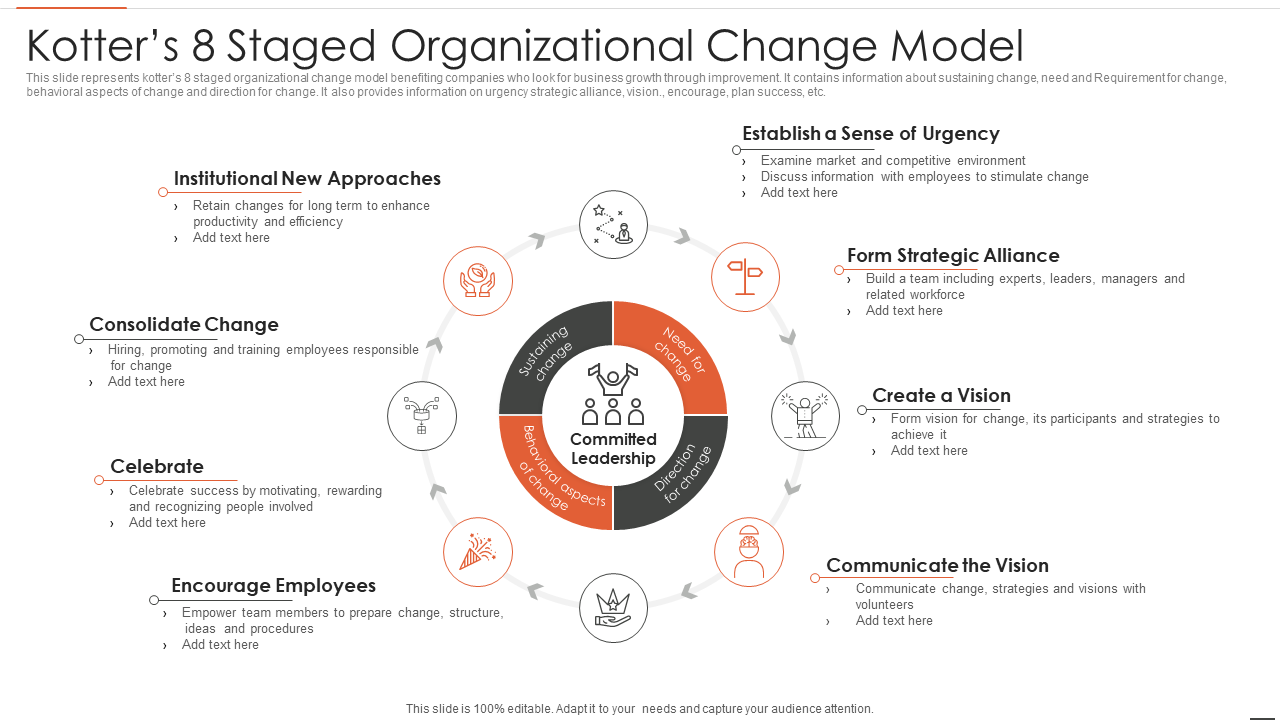
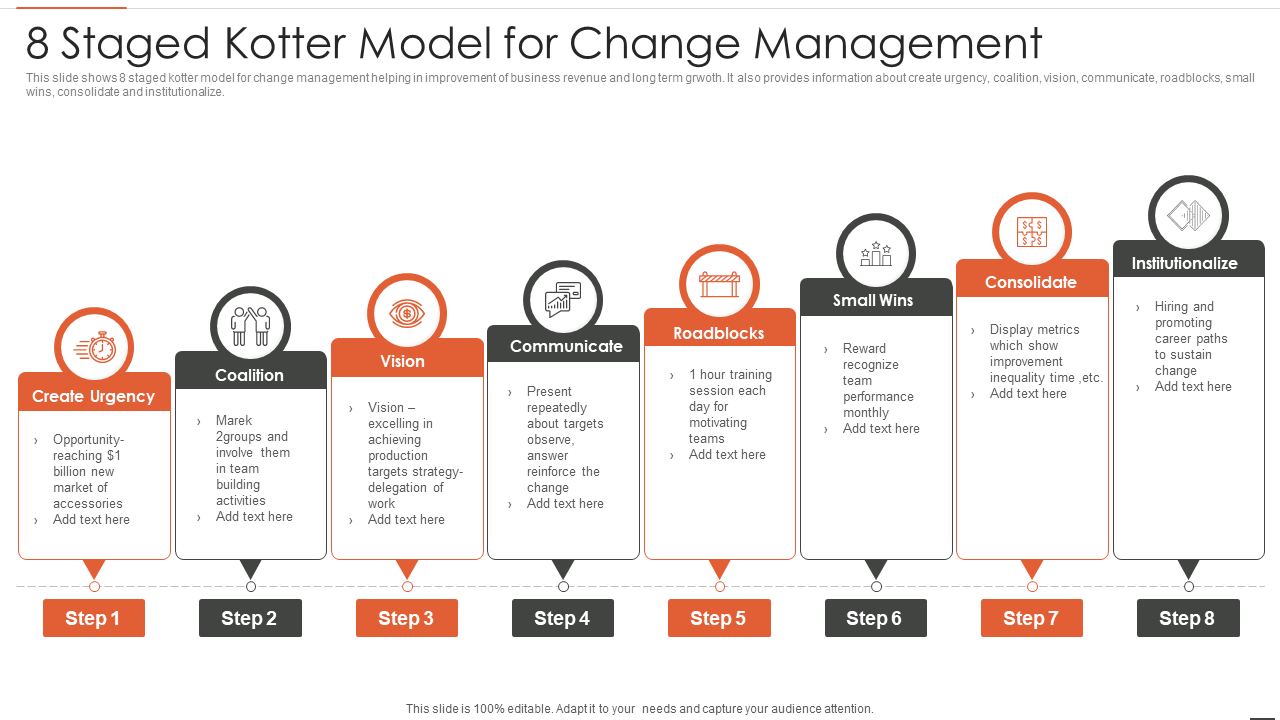
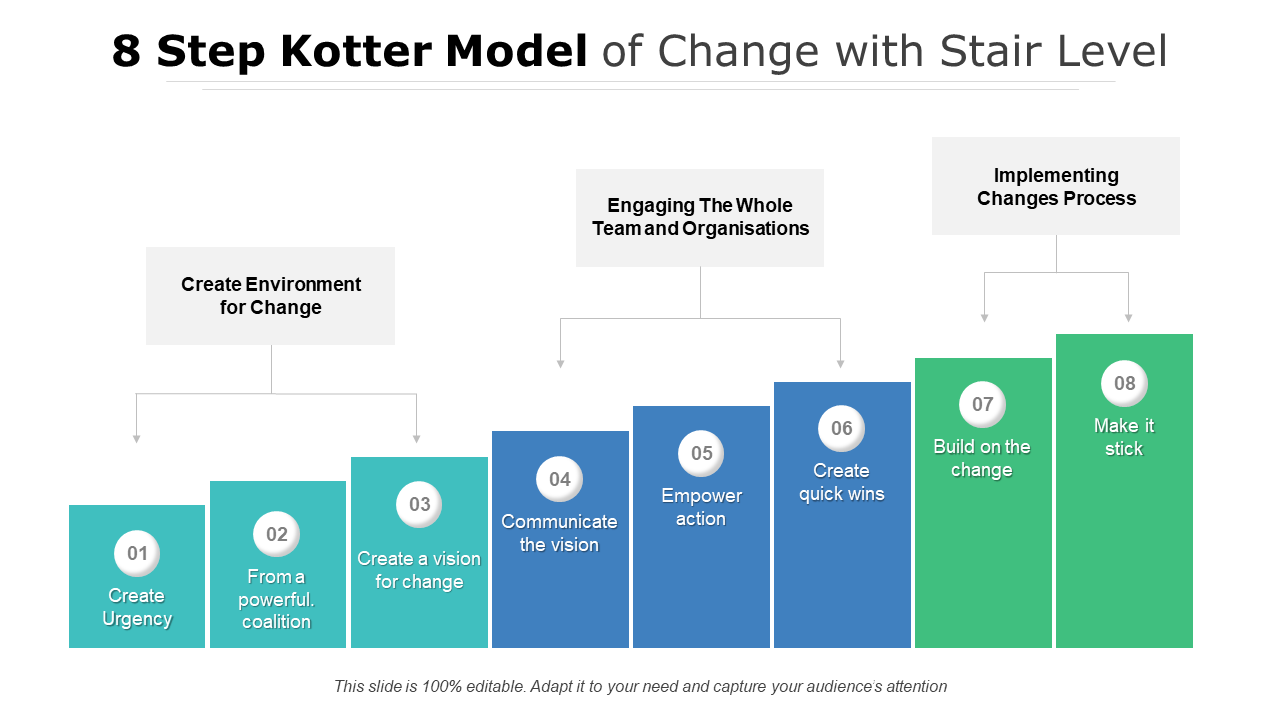
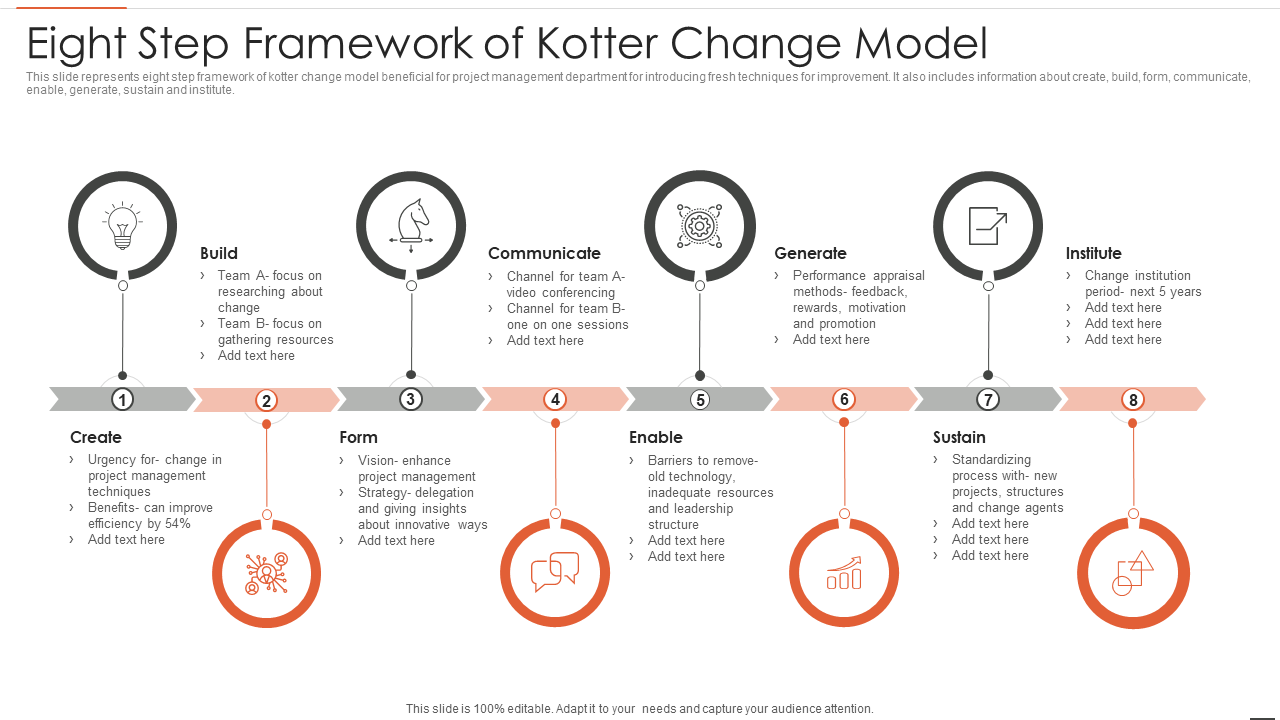
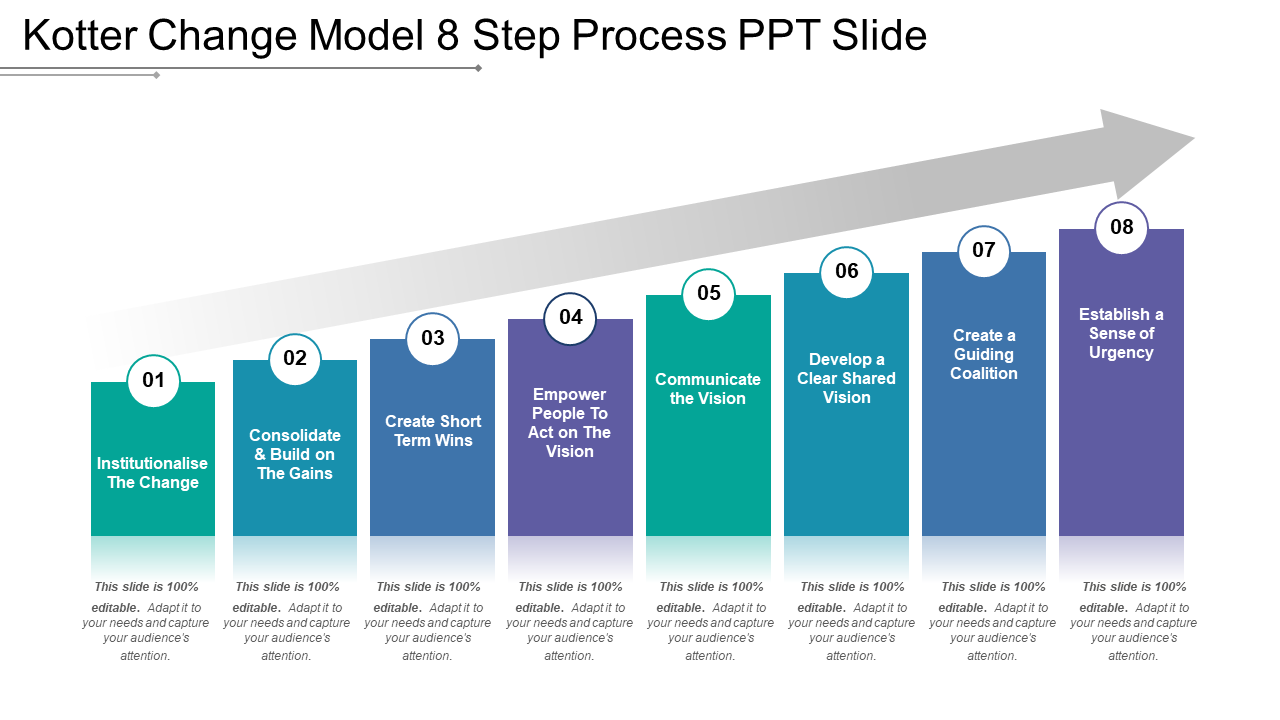
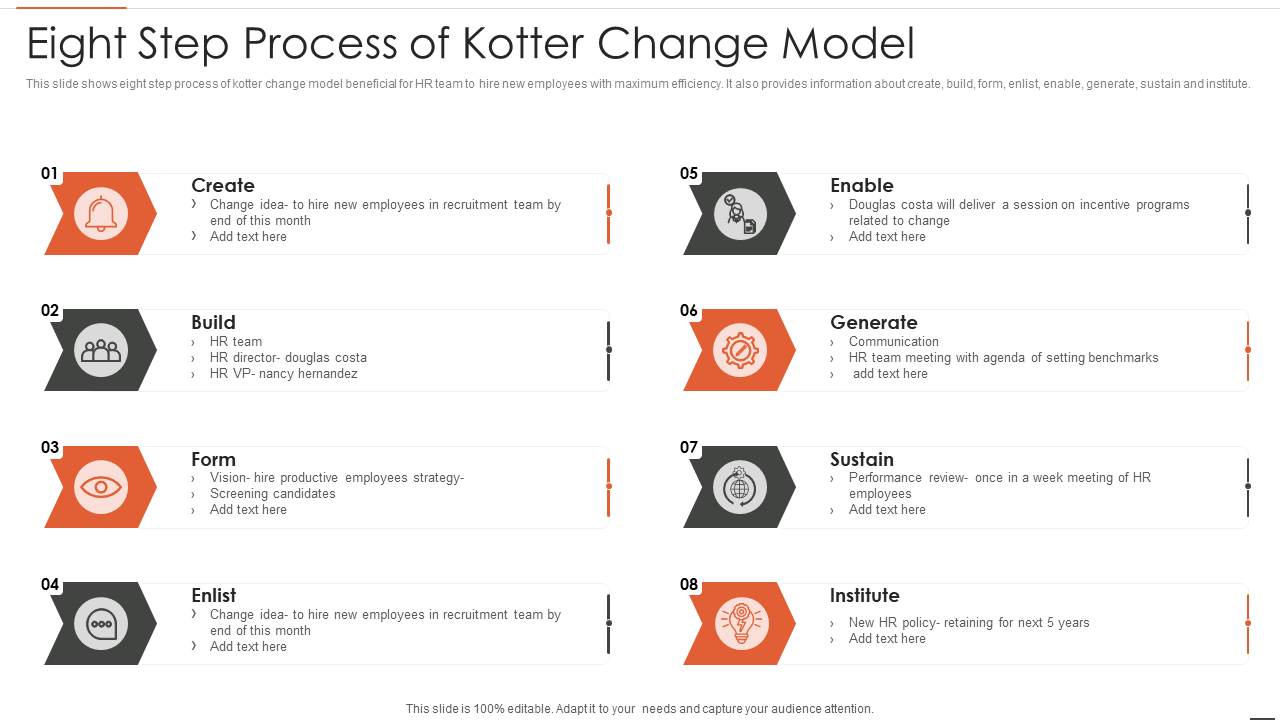
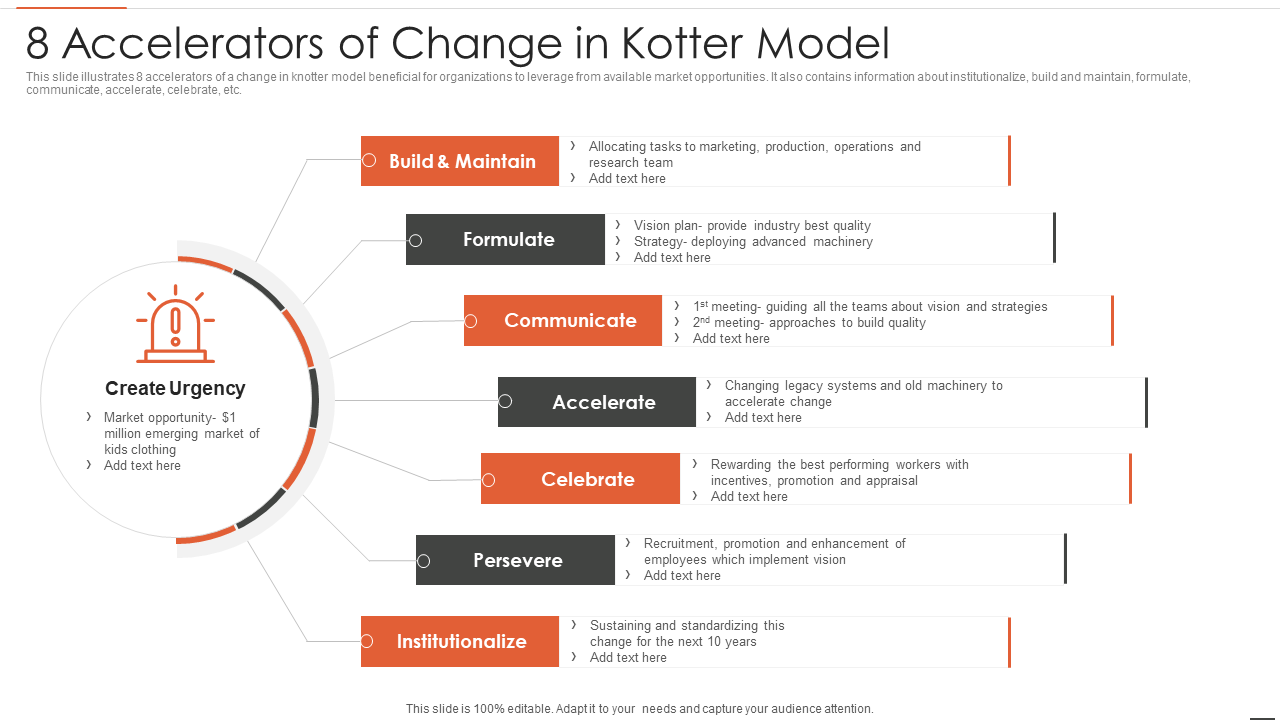
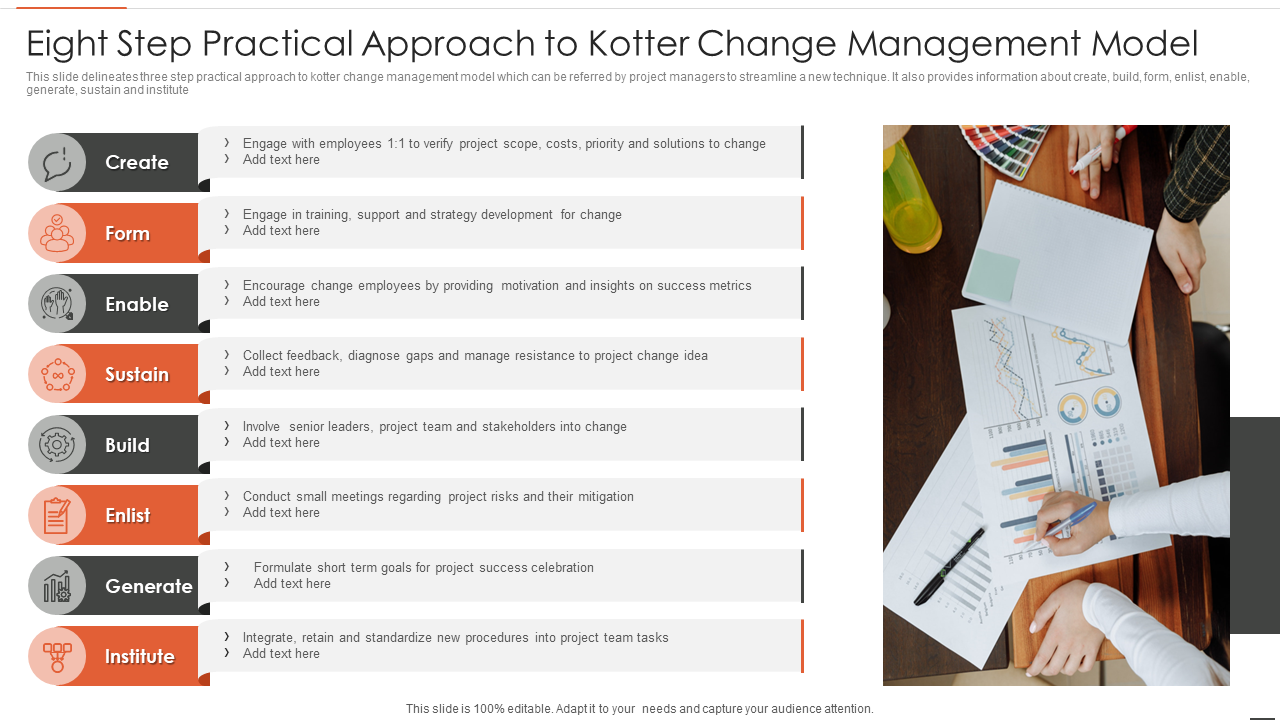
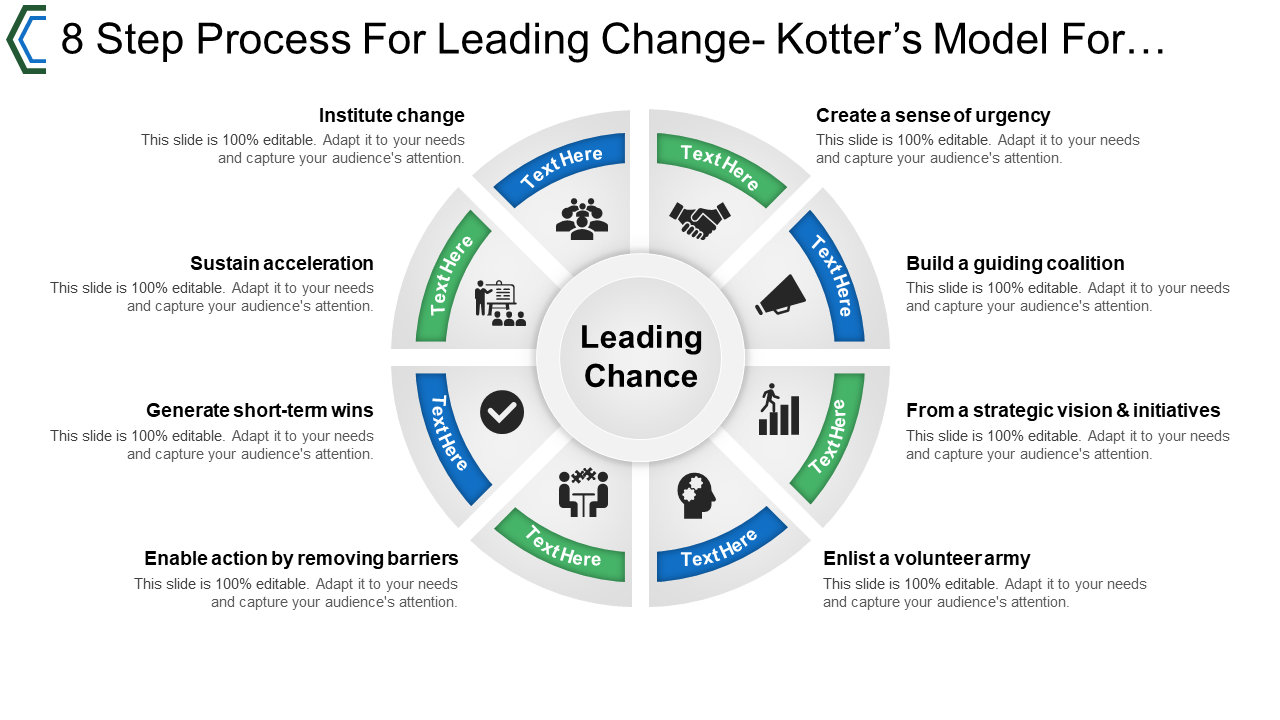



![Top 10 PPT Templates to Construct a Sprint Timeline [Free PDF Attached]](https://www.slideteam.net/wp/wp-content/uploads/2022/03/1013x441no-button-5-1013x441.jpg)
